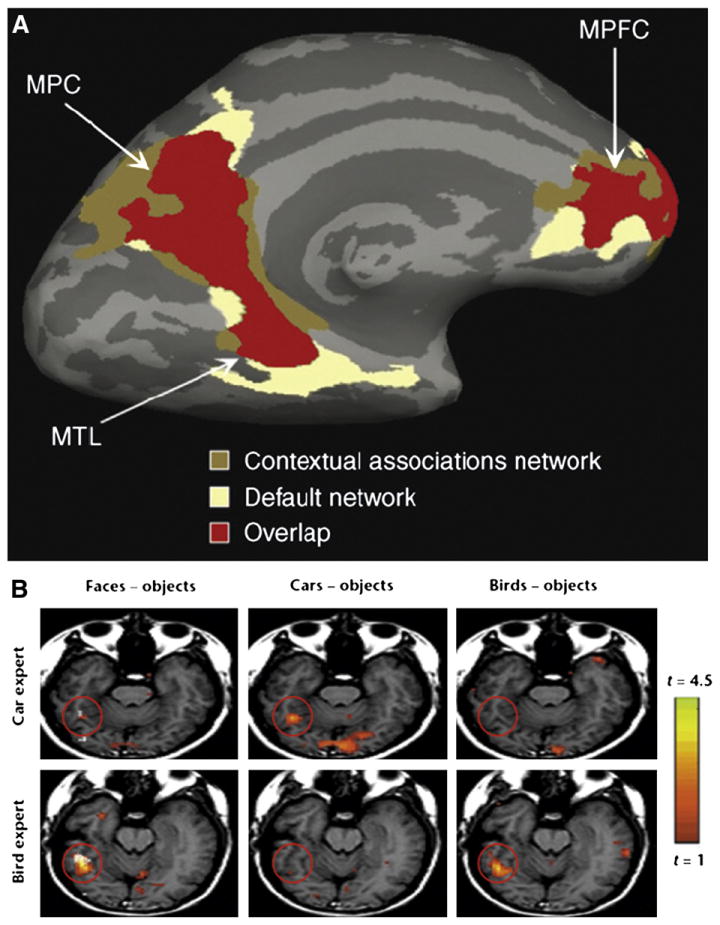Fig. 5.

Different emphases in the investigation of neural mechanisms for associative prediction vs. perceptual expertise. A: Medial view of the typical contextual association network (e.g., Bar and Aminoff, 2003) and its overlap with the default network (e.g., Raichle et al., 2001). The context network activations are obtained from the contrast between strongly contextually associative objects (e.g., a tennis racket) and weakly contextually associative objects (e.g., a jacket). The default network regions are those that are more active during fixation rest than during task performance. MPC, medial parietal cortex. MTL, middle temporal lobe. MPFC, medial prefrontal cortex. B: An axial oblique slice through the right ‘fusiform face area’ (FFA, marked with a red circle), one of the local regions emphasized in several perceptual expertise studies (for subordinate-level expertise, e.g., Gauthier et al., 1999, 2000a,b; Wong et al., 2009b), for a car expert and a bird expert. The FFA was first defined by more robust activations for faces than objects. In Gauthier et al. (2000a), this area was found to be more activated for car experts when viewing cars compared to other objects, and for bird experts when viewing birds compared to other objects.
Copyrights © by Elsevier Ltd. and Nature America Inc. respectively. Adapted with permission.
